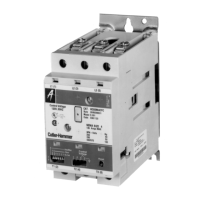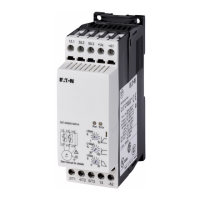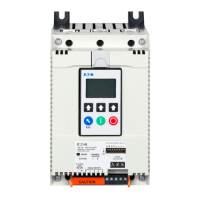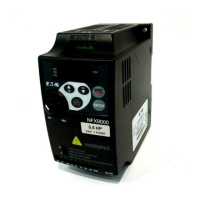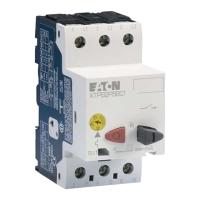EATON HFX Product Family Installation and Operation Manual E-ELCL-II002-E2 July 201934
• OPEN_CURRENT: Commanded current >
measured current indicates a potential open
load condition.
• GND_SHRT_DUTY: Measured low side duty
cycle < commanded indicates a potential short to
ground condition.
• GND_SHRT_VRATIO: Measured voltage <
commanded voltage indicates a potential short to
ground condition.
• MAX_CURRENT: The value selected here sets a
software limit for monitoring individual High Side
output current. If the measured current exceeds
either the hardware limit or the value dened here,
it will cause the Over Current fault.
• OFF_CURRENT: If Duty Cycle = 0% and measured
current > OFF_CURRENT value dened here or
the measured reverse current > 75 mA the Loss of
Control fault will be triggered.
17.2 H-Bridge
The HFX 4A PWM output channels have hardware
support for both High-Side and Low-Side drivers.
Starting with HFX Support Package 1.1.0, an
H-Bridge mode is also supported. This corresponds
to Firmware Minor version of 21622 on the HFX, as
reported by the HFX Service Tool. H-Bridge mode
supports PWM mode, but not closed loop current
control. 4A PWM outputs can be paired in any
combination in H-Bridge mode. For an application
to pair outputs, it is critical they be congured with
the same frequency. All remaining synchronization
is handled automatically in the rmware, including a
50µs dead time.
Each leg of an H-Bridge is individually given a
command between -100% and 100%. A positive
command closes the Low-Side driver and switches
the High-Side PWM corresponding to the command
value. The inverse occurs for a negative command.
A command of 0% switches off both sides.
There are a number of strategies to work with
H-Bridge. For thermal efciency, the recommended
approach is Low-Side switching.
The following function block provides an example of
how to work the H-Bridge with Low-Side switching:
FUNCTION_BLOCK HBridge
VAR_INPUT
Command : REAL;
HighSideCurrent : REAL;
LowSideCurrent : REAL;
END_VAR
VAR_OUTPUT
HighSidePct : REAL;
LowSidePct : REAL;
MeasuredCurrent : REAL;
END_VAR
IF Command >= 0 THEN
HighSidePct : = 100.0;
LowSidePct : = -Command;
MeasuredCurrent : = HighSideCurrent - LowSideCurrent;
ELSE
HighSidePct : = Command;
LowSidePct : = 100.0;
MeasuredCurrent : = -(LowSideCurrent - HighSideCurrent);
END_IF
The block would be used in an application like this:
HBridge
HB
Command
HighSideCurrent
LowSideCurrent
HighSidePct
LowSIdePct
MeasuredCurrent
0
desiredDuty1_4A
desiredDuty2_4A
1
2
measuredCurrent1_4A
measuredCurrent2_4A
Figure 6: H Bridge Example
Note: That because current is measured only in the positive direction, the accuracy of the reported current is limited when rapidly switching
command polarity on highly inductive loads.
HFX Product Family
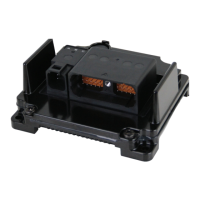
